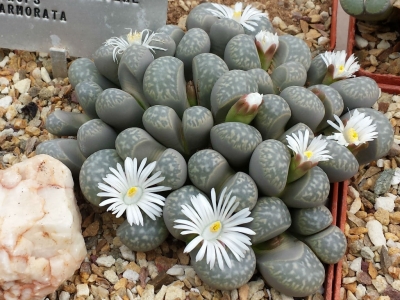
Fritilaria delavayi is a medical plant that grows on the rocky slopes of the Hengduan Mountains in China. The flowers of this plant have been harvested for thousands of years for use in traditional Chinese medicine. As commercial harvesting intensified, Fritillaria delavayi began to vanish rapidly. But scientists have now discovered how the plants have adopted an ingenious method to stay out of sight of the flower pickers – they have evolved to produce grey-brown leaves and flowers to better blend with their rocky surroundings. The leaves and bulbs of this plant are otherwise a bright green.
Such a defense mechanism is not new to the plant kingdom. There are many plants that disguise themselves to fool animals and insects. Let’s take a look at some of them.
Pretending to be sick
Many of us have feigned sickness at some point in our life. Can you imagine plants doing the same? Caladium steudneriifolium is a plant found in the rainforests of Ecuador. The plant’s leaves serve as a tasty meal for leaf-mining moth caterpillars. In order to avoid being eaten, the plants feign sickness by appearing white and pale, even though this means losing their ability to photosynthesise. Usually, this whitish appearance is borne by leaves that have already been attacked by the caterpillars. Researchers discovered that plants that put on the disguise were far less likely to become a meal.
Stones or leaves?
Lithops is a succulent plant native to the dry climates of southern Africa. To prevent being eaten by thirsty herbivores, the plant has evolved to mimic the stones of its surroundings. That’s why it is also called ‘Living stone’ plant. Lithops occur in many natural shades including, tan, brown, reddish brown, purplish brown and grey. The markings and grooves on the leaves make them take the perfect shape of a stone. However, there’s no hiding these plants once they bloom-their flowers are bright and beautiful.
‘Being’ wily
Ophrys apifera, known in Europe as the bee orchid, depends on bees for pollination. Instead of waiting around hoping a bee will drop by the orchid takes matters into its own hands. To lure in male bees, this flower mimics the look and smell of a female bee. Males fly in to meet a potential partner, but instead are covered in a layer of pollen, and thereby pollinate the next orchid they visit.
Picture Credit : Google




